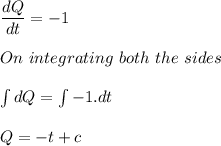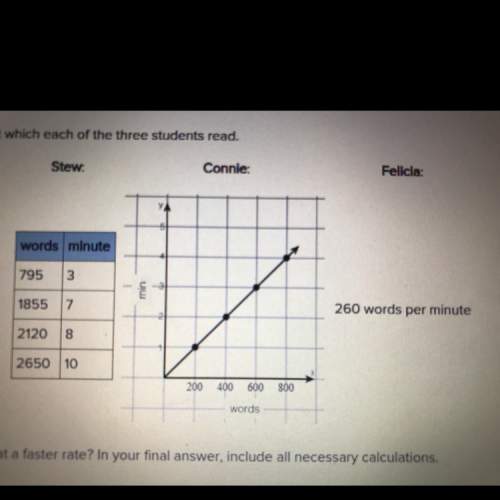
Mathematics, 16.03.2020 02:08 reagancunningham2004
Extreme heat applied to a colony of microorganisms causes the size P of the colony, measured in grams, to decrease according to the exponential decay model dP/dt=−0.4P, where the time t is measured in hours. The size Q of a second colony of microorganisms, also measured in grams, decreases at the constant rate of 1 gram per hour according to the linear model dQ/dt=−1. If at time t=0 the first colony has size P(0)=2 and the second colony has size Q(0)=3, at what time will both colonies have the same size?

Answers: 1


Another question on Mathematics

Mathematics, 21.06.2019 19:30
Ariel is working at a meat packing plant for 5 nights a week. her regular wage is $11 an hour. she earns tine and a half for any overtime hours. this week she worked 9 hours of over time .how much will ariel earn for overtime this week ?
Answers: 1

Mathematics, 21.06.2019 20:10
Which value of m will create a system of parallel lines with no solution? y= mx - 6 8x - 4y = 12
Answers: 1

Mathematics, 21.06.2019 22:00
Write a description of each inequality. 1. -5a + 3 > 1 2. 27 - 2b < -6 (this < has a _ under it) 3. 1/2 (c + 1) > 5 (this > has a _ under it)
Answers: 3

Mathematics, 22.06.2019 01:10
Given: ae ≅ ce ; de ≅ be prove: abcd is a parallelogram. we have that ab || dc. by a similar argument used to prove that △aeb ≅ △ced, we can show that △ ≅ △ceb by. so, ∠cad ≅ ∠ by cpctc. therefore, ad || bc by the converse of the theorem. since both pair of opposite sides are parallel, quadrilateral abcd is a parallelogram.
Answers: 3
You know the right answer?
Extreme heat applied to a colony of microorganisms causes the size P of the colony, measured in gram...
Questions


Mathematics, 26.06.2020 16:01






English, 26.06.2020 16:01


Mathematics, 26.06.2020 16:01



History, 26.06.2020 16:01



Mathematics, 26.06.2020 16:01

Computers and Technology, 26.06.2020 16:01














